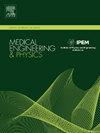Performance and usability of an intraoperative registration paste frame for a spine surgical navigation system
IF 2.3
4区 医学
Q3 ENGINEERING, BIOMEDICAL
引用次数: 0
Abstract
Study design
Experimental and observational study
Objectives
Despite the rapid development of various spine surgical navigation systems, they are not yet widespread. The possible explanation is that navigation accuracy is not guaranteed and user errors still occur. Therefore, we develop four different intraoperative registration paste frames and conducted simulated spine surgery in a hybrid room environment. Through performance and usability tests, we aim to evaluate the proper registration tool for spine surgical navigation system.
Methods
Five spine surgeons used the spine surgical navigation system and a robotic 3D C-arm to execute performance and usability tests for four different intraoperative registration paste frames. In performance test, we measured the registration and navigation accuracies. As for usability test, three observers recorded the user errors during operation and surgeons filled out a questionnaire after the procedure. Statistical analysis was performed to evaluate the test result between different paste frame designs.
Results
L-type intraoperative registration paste frame made by PEEK achieved small registration error (0.060 ± 0.014 mm) and small navigation error (1.30 ± 0.69 mm). The usability test showed that the L-type design not only reduced the operational risk, but also increased satisfaction.
Conclusion
Through the performance and usability tests, we identified the L-type intraoperative registration paste frame made by PEEK as a promising registration tool in spine surgical navigation system. Further study in the clinical setting with more case numbers is necessary to consolidate this finding.
脊柱外科导航系统术中配准粘贴框架的性能和可用性
研究设计实验和观察性研究目的尽管各种脊柱外科导航系统发展迅速,但尚未普及。可能的解释是,导航精度不能保证,用户错误仍然发生。因此,我们开发了四种不同的术中登记粘贴框架,并在混合室环境中进行了模拟脊柱手术。通过性能和可用性测试,我们旨在评估合适的脊柱外科导航系统的注册工具。方法5名脊柱外科医生使用脊柱外科导航系统和机器人三维c型臂对4种不同的术中配准粘贴框架进行性能和可用性测试。在性能测试中,我们测量了配准精度和导航精度。在可用性测试方面,三名观察员记录了用户在手术过程中的错误,外科医生在手术后填写了一份问卷。对不同膏状框架设计的试验结果进行了统计分析。结果采用PEEK制作的sl型术中配准糊架配准误差小(0.060±0.014 mm),导航误差小(1.30±0.69 mm)。可用性测试表明,l型设计不仅降低了操作风险,而且提高了满意度。结论通过性能和可用性测试,我们确定了PEEK制作的l型术中配准粘贴架是一种很有前途的脊柱外科导航系统配准工具。有必要在临床环境中进行更多病例数的进一步研究来巩固这一发现。
本文章由计算机程序翻译,如有差异,请以英文原文为准。
求助全文
约1分钟内获得全文
求助全文
来源期刊

Medical Engineering & Physics
工程技术-工程:生物医学
CiteScore
4.30
自引率
4.50%
发文量
172
审稿时长
3.0 months
期刊介绍:
Medical Engineering & Physics provides a forum for the publication of the latest developments in biomedical engineering, and reflects the essential multidisciplinary nature of the subject. The journal publishes in-depth critical reviews, scientific papers and technical notes. Our focus encompasses the application of the basic principles of physics and engineering to the development of medical devices and technology, with the ultimate aim of producing improvements in the quality of health care.Topics covered include biomechanics, biomaterials, mechanobiology, rehabilitation engineering, biomedical signal processing and medical device development. Medical Engineering & Physics aims to keep both engineers and clinicians abreast of the latest applications of technology to health care.
 求助内容:
求助内容: 应助结果提醒方式:
应助结果提醒方式:


